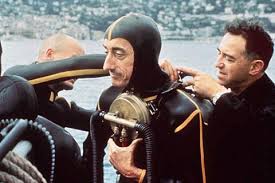A Look At Playa del Carmen In Its Early Days


The thriving city of Playa del Carmen was not long ago, an undeveloped region of dense jungle. The ancient Maya used the beaches of Xaman Ha, Playa’s Mayan name meaning «waters of the north» as a resting point to prepare their massive canoes for the 30 mile trek to the Island of Cozumel. For some, the journey was for business purposes – to barter local goods such as honey and salt for other commodities. While for others, this voyage to Cozumel was a sacred one.

Thousands of Mayan women from the mainland, for over 700 years, embarked on this important pilgrimage to pay homage to Ixchel, the goddess of fertility. Braving all weather and sea conditions, these determined souls entered the temples and purification huts on the small island to pray to Ixchel who was responsible for the formation and sex of the unborn child.

From 1000-1500, the Mayan civilization flourished in the area, building vibrant cities in Tulum, Chichen Itza and Coba, which became the spiritual mecca of the Mayan world. In 1518, Spanish conquistadors invaded the region, leaving destruction and disease in their wake. The Mayan population dwindled down to a few dozen who had managed to escape and elude the small pox epidemic. Although frequented by pirates and traders on route to and from the North port of Veracruz and the South port of Honduras, Playa del Carmen, renamed by the Spanish after the patron saint of Cancun, remained virtually untouched. 1902 marked the year when Playa officially became a territory in the state of Quintana Roo. Years later, families would begin to settle in the area and thus was born the quaint fishing village. The region gained notoriety in the early 1960s when Jacques Cousteau filmed a documentary on the Great Mayan Reef, the second largest barrier reef in the world. After being stamped as one of the top dive sites in the world by the famous underwater explorer, Cozumel became a globally recognized tropical playground.

In the 1967, the Mexican government initiated a mega-development project to designate Cancun as a major tourist destination. Hotels, bridges and electrical lines were established which brought an influx of tourists to the Yucatan Peninsula. In 1970, Playa del Carmen’s first wooden dock was constructed and soon after, ferry service commenced to Cozumel, a popular port of call at that time. Short ferry trips from Cozumel introduced more and more cruise passengers to Playa del Carmen each year.

The remote location, natural, undisturbed setting and pristine beaches began to attract further interest and appealed especially to the free-spirited hippie generation. Rustic beach bars speckled the sand and massive cruise ships dotted the seascape. Thatched roof cabanas were erected with doors made out of bamboo and palms, not to restrict thieves from entering, but to keep out the wild pigs which often roamed the town’s dirt roads.

In the 1990s, construction of 2 larger hotels took place along the shore in the center of town, which was at that time, dominated by small family owned and operated inns. With more development came a surge in the village’s population. Newcomers moved into the town at a rate of 100 families per month, procuring Playa del Carmen’s reputation for Mexico’s fastest growing city.

During this decade, many shops, as well as local and international restaurants were established along 5th Avenue. By the year 2000, the quaint, cobblestone street, «La Quinta» was closed to traffic and stretched more than a mile north of the dock past Constituyentes. Currently, the exuberant 5th Avenue extends past CTM and is host to hundreds of dining establishments and a plethora of boutique stores, spas, artisan shops, dive centers and galleries.


Even though this heavenly city by the sea continues to experience a rapid growth rate, the local government has worked hard to honor and preserve the simplistic nature of Playa del Carmen’s humble beginnings and its charming character still remains intact. For an in depth history of Playa del Carmen, visit the recently opened Museum located in Playacar near the Reef Hotel, Manzana 27, Lot 8, Xaman-Ha, Playacar Phase 2.

